1. What is Transfer Printing?
Transfer printing describes two different types of printing: Heat transfer printing and sublimation. They both have their pros and cons, but they both tend to be more suited for different needs. There is still some ambiguity on sublimation and how it works, so we are going to take a look at the most frequently asked questions and try and provide a little more clarity.
2. What is Heat Transfer Printing?
Heat transfer printing is done using a specialist paper that is called transfer paper. You can use a standard inkjet or laser printer to print onto this paper with your normal inks. You then place the paper onto your clothing and use a heat press, or in some cases, you can use an iron, and peel away the paper.
Your design will then be stuck-on to your garment, and you will be able to see the transfer. You can use most heat transfer paper on a variety of fabrics, including most poly textiles and natural cotton. You can print on both light and dark coloured garments.

3. What is Sublimation?
Sublimation is a modern digital printing technique that is increasing in popularity. Search volume has increased by around 115% worldwide since 2004, according to Google Trends. It uses sublimation paper and heat to print your design.
We advise that you use this on fabrics that are 85% poly or more. This is because it is the poly fibres that open their pores to accept the dye. You can use a lower composition, however, your colours will be affected. You’ll end up with more of a ‘vintage faded’ look. You can also print on hard surfaces with a poly-coating, such as keyrings, jigsaws, mugs and so much more.
4. What is Sublimation Paper?
Sublimation transfer paper is a specialist paper that is used exclusively in sublimation printing. Made using a paper substrate, which is broadly based on a normal paper. A special coating added to the paper holds the dye sublimation inks. The coating includes around 35% silica and 5% binder, based on the weight of the paper when it’s dry.
Sources: Patent Encyclopedia
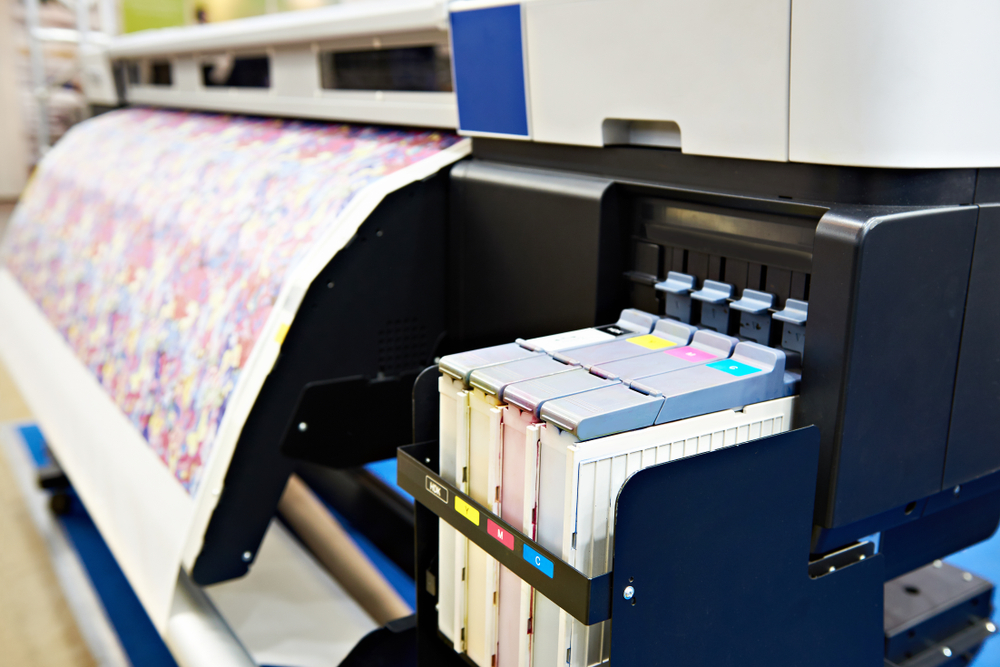
5. How does Sublimation Transfer Printing Work?
Sublimation doesn’t use any liquid in the process. Inks heated from their solid-state on the sublimation paper, convert straight to a gas. It is a printing method that bonds to poly fibres, and because the poly fibres have been heated, the pores expand. These open pores then allow the gas into them, which then fuses to the fabric itself, before resuming its solid-state. This makes the ink part of the fibres themselves, rather than just a layer printed on the top.
6. What Are the Steps of Using Thermal Transfer Paper to make a T-shirt?
Sublimation is a two-step process. Firstly, you need to print your design onto the sublimation paper, using specialist sublimation dyes. The image would need to be mirrored, but don’t worry about that, Contrado does that for you when you place your order, so all you need to do is create your design as you want it to look when it’s finished.
Then you need to press the design from your paper onto your t-shirt (or fabric or surface). This is done using a heat press which applies either heat and pressure, or heat and a vacuum. Once pressed, simply remove the transfer paper, and voila, your t-shirt is printed.
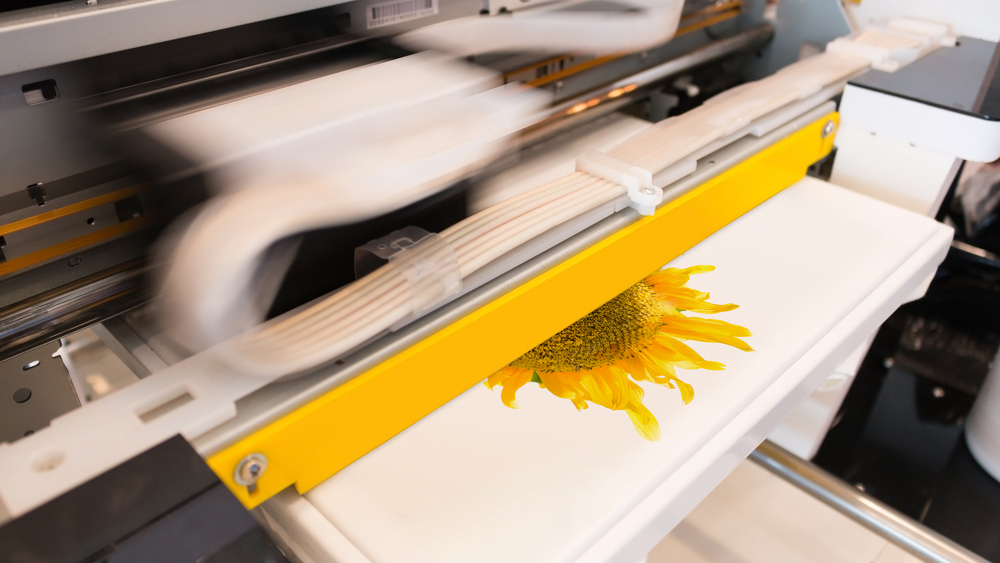
7. Does Sublimation Paper Transfer onto Dark Fabric?
Sublimation is best suited to white or light-coloured fabric bases. You can use it on darker shades, however, it will affect your colours. White ink is not used in sublimation printing. White parts of the design remain unprinted which shows the base colour of the textile.
The benefit of sublimation over heat transfer printing is that there is a much broader range of colours. This means that you could print your background colour onto the fabric rather than use a different coloured fabric, and because of the advanced printing methods, the material would feel exactly the same.
8. Is heat transfer paper sensitive to humidity in the air?
Sublimation paper holds an enormous amount of moisture and humid air is not great for it. Exposure to humid air causes the sublimation paper to absorb it like a sponge. This results in image bleeding, uneven transfers and colour shifting.
Heat transfer paper is also sensitive to humidity. The inkjet or laser printing is more prone to dotting and colour bleeding if there is excessive moisture in the paper, and as this form of printing applies a film, rather than being textureless, you may find that the transfer is not flat, or curls or peels at the edges.
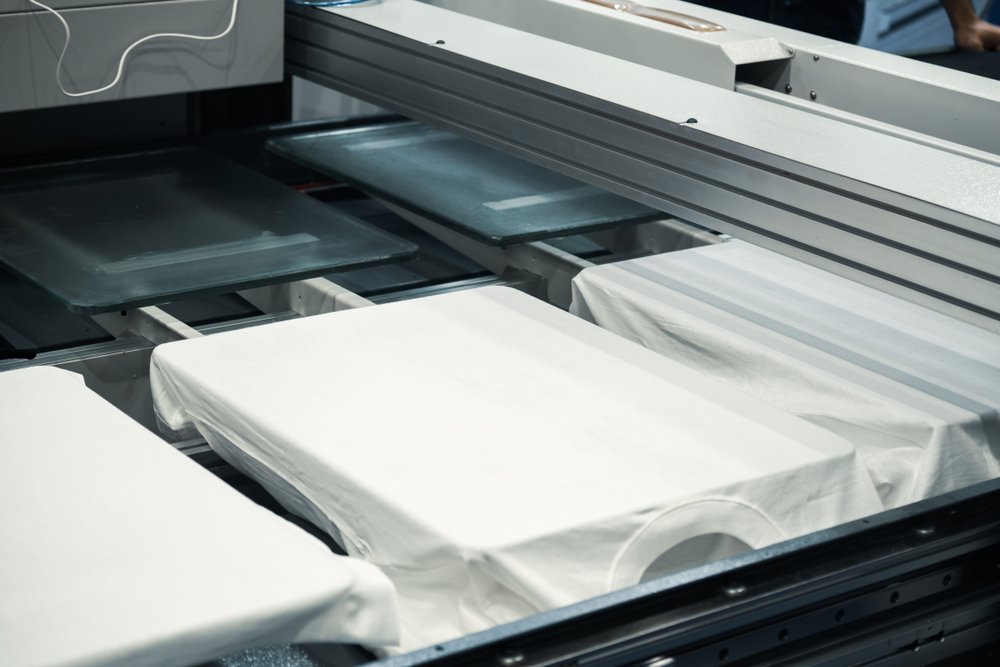
9. Which is the right print side of the sublimation paper?
When working out which side to print on your sublimation paper, it is important that you print your design onto the bright white side. If you order sublimation paper from Contrado already printed with your design, you will be able to tell which side is the right side.
You’ll find that your colours look pale on the sublimation paper. This is completely normal and isn’t what the finished press will look like. Once transferred to your medium your colours will come to life! Another benefit of sublimation over transfer printing is that there is a much bigger range of colours.
10. Can thermal transfer paper be reused?
You can’t reuse your thermal transfer paper, whichever type you use. Although with sublimation paper, you may find that there is some ink remaining on the paper, it will not be enough to make a good-quality print.
With transfer paper, the iron’s heat melts the plastic lining on the paper, which transfers the ink to the fabric, as well as the plastic from the paper. This would be impossible to re-use.
11. What mistakes do you make when using a T-shirt transfer paper?
There are some common mistakes when it comes to designing your own t-shirts, other clothing and items.
- Printing on the wrong side of the paper
- Applying too little pressure
- Applying too much or too little heat
- Putting the wrong side of the transfer to your fabric
- Incorrect positioning
- Not mirroring design*
- Press for too long (you can end up scorching or melting the paper)
- Using the wrong kind of inks on the wrong paper
- Using the wrong material (sublimation requires high poly percentage)
*remember, if ordering through Contrado, we will do this for you, it’s important that you don’t do this step.
We always suggest testing on a small piece first, to ensure that you get the right amount of heat and pressure, before printing your full design.
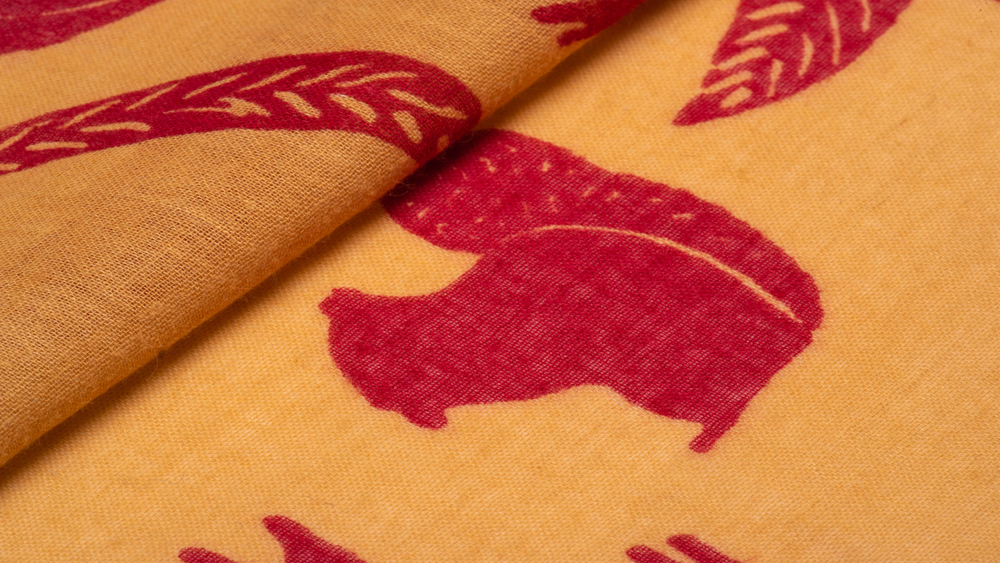
12. What are the Pros and Cons of Sublimation?
Pros
- Colour is permanently transferred to the fabric
- No liquid in the printing process, immediately dry
- Incredibly durable and super long-lasting
- Completely textureless design, even when all over
- Can be used on rigid products with poly-coating
- Prints full colours, perfect for photos and variety
- Inks have good UV resistance as standard
- Self weeding (only transfers the ink to the fabric)
Cons
- Not great for dark coloured fabrics
- Requires a high poly content (85%+)
- More expensive to set up than transfer
13. What are the Pros and Cons of Heat Transfer Printing?
Pros
- Much cheaper to set up, can use home printer
- Can be used on 100% cotton fabrics
- Works with both light and dark garments
Cons
- Leaves a textured film on clothing
- Only for use on fabric, doesn’t work on rigid products
- Much less durable and fades a lot with washing
- Can crack and peel over time
- Cannot iron design (although you can iron the rest of the clothes)
- Not self weeding (you need to cut your image out – especially on dark fabric)



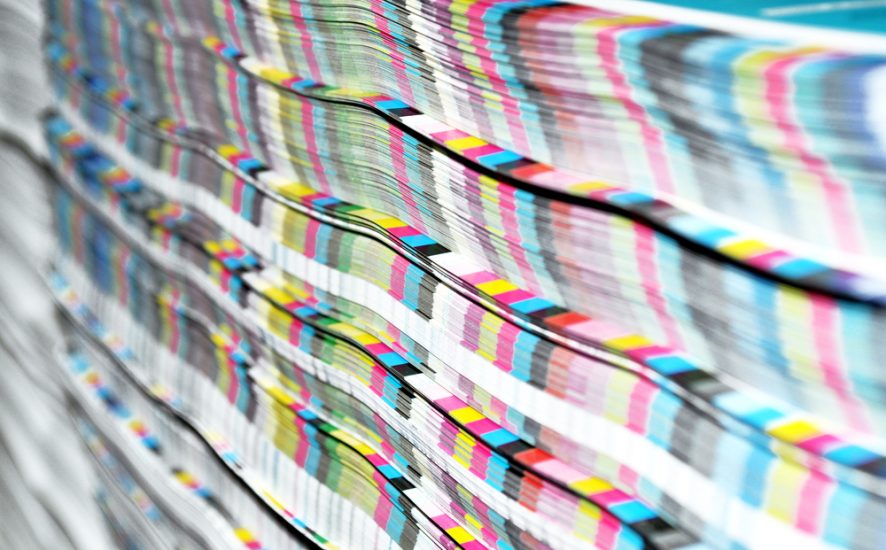
I saw the text saying in some cases a clothes iron can be used with sublimation. Could an iron be used with a small design for the sides of a polyester face mask?
Mel
No. A cloth iron may not work well. Sublimation is done at approx 185 to 215 degree celsisu which a regular home iron can’t reach.
One of the Cons of Heat Transfer Printing is…
“Not self weeding (you need to cut your image out – especially on dark fabric)”
Can you explain this a bit more?
Thank you – loved this article!
I only know the answer to this bc I’ve searched for heat transfer paper online and seen this referenced. Weeding refers to elimination of extra transfer paper around the image. Any extra paper transferred is clear, but does change fabric texture. This is avoided by cutting image from paper prior to heat transfer, with self – discretionary precision. I’ve been making some funny homemade mask designs and leave anywhere from 1/8″ – 1/4″ perimeter of clear transfer paper around my image and its unnoticeable to me.
I have done my first sublimation print and felt so disappointed because it burnt the T-shirt
and because it was already burnt I tried it a few time on that same T-shirt’s with no success what am I doing wrong
Epsom printer bought from new so only sub ink been in it, and cricut heat press 2 sublimation print paper
Hi, for mugs and slate or other hard surface ( glass, plastic and so on) what’s the best : heat transfer paper or sublimation paper? Normal ink or sublimation ink?
This information was very helpful, I have a sublimation printer on the way, and would like to do dark colored shirts also, in this section, is it referring to a sublimation background on dark colors? If so can you explain the process? “The benefit of sublimation over heat transfer printing is that there is a much broader range of colours. This means that you could print your background colour onto the fabric rather than use a different coloured fabric, and because of the advanced printing methods, the material would feel exactly the same.”